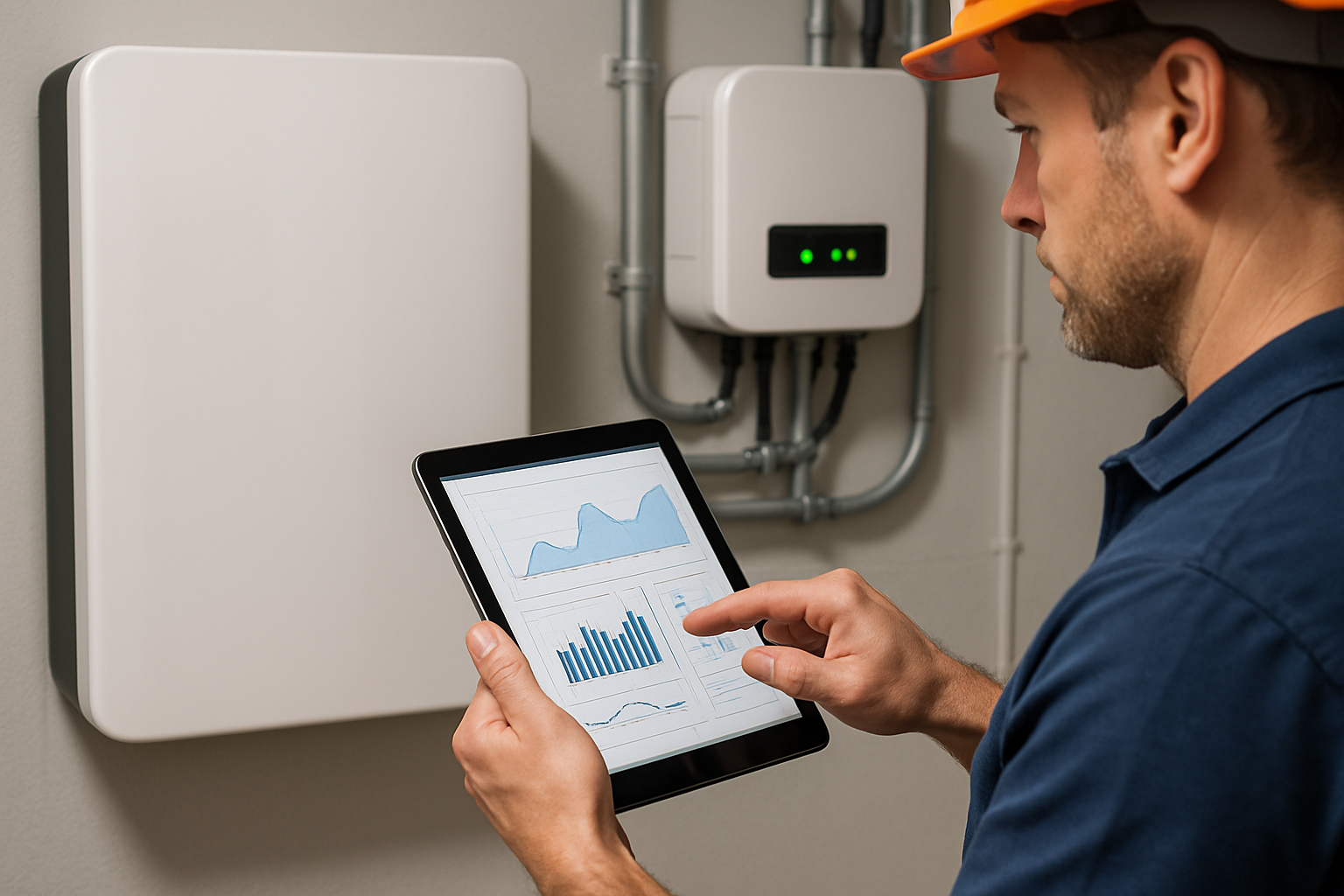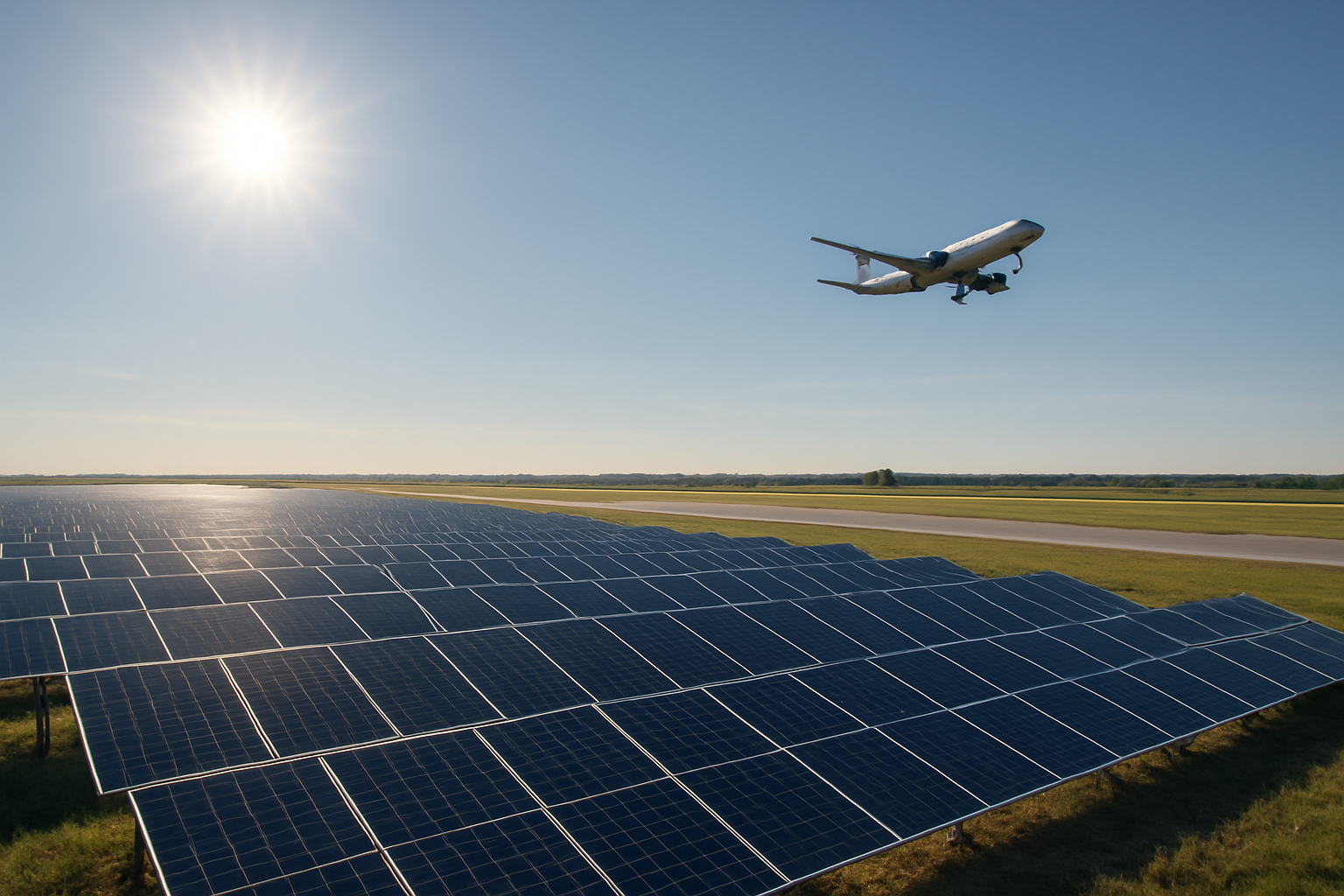Adopting solar energy brings you closer to energy independence. Yet, practical questions often arise about how a new system might change your home environment. Concerns about operational sound, light reflection, and visual appearance are common. This guide provides a straightforward look at these topics, using clear data to address noise, glare, and aesthetics in residential solar and energy storage systems.
Understanding and Managing Solar System Noise
Modern solar energy systems are engineered for quiet operation. While most components are silent, a few produce low-level sounds during normal function. Understanding these sources helps in planning an installation that remains unobtrusive.
Primary Sources of Sound in a Solar Installation
The sound associated with a solar setup primarily comes from the inverter and, to a lesser extent, the energy storage system. The solar panels themselves are completely silent.
- Solar Inverters: The inverter is the component that converts the direct current (DC) electricity from your solar panels into alternating current (AC) for your home. This process generates heat, which is managed by internal cooling fans. These fans, along with the electrical components, can produce a faint hum during peak operation. High-quality solar inverters are designed with advanced cooling systems to keep sound to a minimum.
- Energy Storage Systems (ESS): A home battery system allows you to store excess solar energy. Some home energy storage systems may have small fans or pumps for thermal management. Our integrated ESS solutions, which utilize high-performance LiFePO4 batteries, are built for quiet, reliable performance suitable for placement in a garage or utility room.
For those living off-grid, the difference is significant. A solar and storage system offers a peaceful alternative to the constant noise of a traditional generator. You can find a detailed comparison in Off-Grid Silence: Solar vs Generator Noise for Cabins.
What Do Decibel (dB) Levels Mean for Your Home?
The sound from an inverter is often compared to that of a modern refrigerator. Most high-quality inverters operate at levels between 40 and 50 decibels (dB). Strategic placement in a garage, basement, or an outdoor area away from living spaces further reduces any noticeable sound. A data report on typical dB levels from inverters and fans can provide more specific benchmarks.
| Sound Source | Typical Decibel Level (dB) |
|---|---|
| Whisper | 30 dB |
| High-Quality Solar Inverter | 40-50 dB |
| Modern Refrigerator | 40-50 dB |
| Normal Conversation | 60 dB |
| Washing Machine | 70 dB |
Strategies for a Quieter Solar Experience
Achieving a near-silent system is possible with proper planning. Start by selecting components known for low-noise operation. Discuss installation locations with your installer to isolate equipment from bedrooms and living rooms. For more details on system design, see Quiet by Design: Measuring Inverter and ESS Noise at Home.
Addressing Concerns About Solar Panel Glare
Glare, or concentrated light reflection, is a frequent concern for homeowners, neighbors, and local permitting offices. However, the perception of solar panels as highly reflective objects is largely a misconception.

Do Solar Panels Actually Create Significant Glare?
Solar panels are engineered to absorb sunlight, not reflect it. Their purpose is to capture as much light as possible to convert it into electricity. According to the International Energy Agency, solar panels absorb over 90% of the light they receive. Modern panels are manufactured with an anti-reflective (AR) coating, a specialized layer that further increases light absorption and minimizes reflection. As a result, they are typically less reflective than standard window glass or bodies of water. You can explore this topic further in Myth vs Reality: Do Solar Panels Cause Glare or Dazzle?
Glare Regulations and Impact on Communities
In specific situations, such as properties near airports or major roadways, glint and glare are subject to review. Professional solar installers use specialized software to model potential reflection paths and ensure the system's layout complies with local regulations and Federal Aviation Administration (FAA) guidelines. These tools help prevent any visual discomfort for pilots or drivers. For a review of this software, see Tool Review: Best Glint and Glare Simulators for Rooftop PV. A proactive approach to modeling can also be instrumental in winning HOA approval despite glare concerns.
Practical Steps to Minimize Visual Discomfort
Several factors contribute to minimizing any potential for glare. The tilt angle and orientation of the panels can be adjusted to direct any minimal reflection away from sensitive areas. Choosing panels with a high-transmissivity, textured glass surface and an AR coating is also effective. Strategic landscaping, such as planting trees or shrubs, can serve as a natural visual buffer if needed. For a data-backed overview of these techniques, read 9 Ways to Cut Solar Glare and Visual Impact, Backed by Data.
Enhancing the Aesthetic Appeal of Your Solar System
A solar installation is a significant, long-term addition to your property. Its visual integration is important for maintaining curb appeal and personal satisfaction. Fortunately, modern solar technology offers many options to create a system that looks great.
Modern Design: Beyond Traditional Blue Panels
The solar industry has evolved to offer products that are both efficient and aesthetically pleasing. All-black solar panels have become a popular choice for their sleek, uniform appearance. These modules blend seamlessly with most roofing materials, creating a discreet and sophisticated look. Paired with low-profile mounting hardware and concealed wiring, the result is a clean installation that complements your home's architecture. Learn more about these design choices in this Aesthetic Blueprint: All-Black Modules, Concealed Cabling.
System Placement and Layout for Visual Harmony
A thoughtful layout is key to a visually appealing solar array. A professional installer will work to create a symmetrical design that aligns with your rooflines. Grouping panels together into a clean, rectangular shape is preferable to scattering them across different roof planes. A proper site assessment will balance maximum energy production with the best possible visual outcome, ensuring your system is both powerful and attractive. For tips on working with your neighbors and community, see How to Make Rooftop Solar Look Great and Stay Neighbor-Friendly.
The Future of Integrated Solar
Solar technology continues to advance toward even better building integration. Building-Integrated Photovoltaics (BIPV) are an emerging trend where solar cells are incorporated directly into roofing materials like shingles, tiles, or facades. These technologies offer a way to generate power while being nearly indistinguishable from traditional building materials, satisfying even the strictest aesthetic requirements. You can discover more about these innovations in Trends to Watch: Building-Integrated PV That Pleases HOAs.
A Balanced Perspective on Solar Integration
Modern solar and energy storage systems are designed with the home environment in mind. They operate quietly, produce minimal glare, and can be installed to enhance your home's appearance. By selecting high-quality components, such as low-noise solar inverters and aesthetically pleasing panels, and working with an experienced installer, you can achieve energy independence without compromising comfort or curb appeal. The goal is to provide reliable and scalable energy solutions that integrate smoothly and effectively into your life.
Disclaimer: This article is for informational purposes only and does not constitute legal or investment advice. Please consult with a qualified professional for guidance specific to your situation.





Leave a comment
All comments are moderated before being published.
This site is protected by hCaptcha and the hCaptcha Privacy Policy and Terms of Service apply.